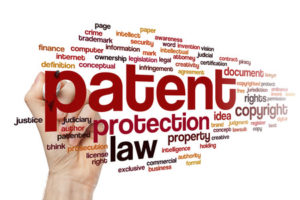Pharmaceutical Patents
 Aprecia Pharmaceuticals LLC has been marketing the drug levetiracetam under the name Spirtam®, as an anti-seizure. What caught my attention was the carrier for the drug, which was printed using an additive manufacturing technique, also known as 3D printing. This technology has been widely publicized over the last few years, and used to make automotive parts, aerospace parts, firearms, and medical devices, among other products. Aprecia Pharma’s patented use of 3D printing for pharmaceutical compositions is a first,[1] and allows xenobiotics (drugs) to be made in highly porous matrix that dissolves in the mouth within a mean time of 11 seconds.[2] Read More
Aprecia Pharmaceuticals LLC has been marketing the drug levetiracetam under the name Spirtam®, as an anti-seizure. What caught my attention was the carrier for the drug, which was printed using an additive manufacturing technique, also known as 3D printing. This technology has been widely publicized over the last few years, and used to make automotive parts, aerospace parts, firearms, and medical devices, among other products. Aprecia Pharma’s patented use of 3D printing for pharmaceutical compositions is a first,[1] and allows xenobiotics (drugs) to be made in highly porous matrix that dissolves in the mouth within a mean time of 11 seconds.[2] Read More


 Many people start the patenting process after having developed an idea into an invention. However, once the invention is formed, there are many more items to consider, which depend on the inventor’s goals for the invention, such as bringing the invention to market by himself or herself, seeking out investors to bring an invention to market, or seeking someone else to “purchase” the technology. Ultimately, a patent defines an area of protection, where the owner of a patent can prevent others from making, selling, importing, and offering to sell the invention in the country where the invention is patented.
Many people start the patenting process after having developed an idea into an invention. However, once the invention is formed, there are many more items to consider, which depend on the inventor’s goals for the invention, such as bringing the invention to market by himself or herself, seeking out investors to bring an invention to market, or seeking someone else to “purchase” the technology. Ultimately, a patent defines an area of protection, where the owner of a patent can prevent others from making, selling, importing, and offering to sell the invention in the country where the invention is patented.  The Supreme Court decided it is unconstitutional for the government to prevent registration of trademarks based on a subjective determination of offensive content, with all justices that issued an opinion. In the case, Matal v. Tam, an Asian-American band named The Slants attempted to register the band’s name. The application was rejected based on a portion of the federal trademark act banning marks that disparage, foster contempt, or disrepute any living or dead person, namely that the name The Slants degraded those of Asian descent.
The Supreme Court decided it is unconstitutional for the government to prevent registration of trademarks based on a subjective determination of offensive content, with all justices that issued an opinion. In the case, Matal v. Tam, an Asian-American band named The Slants attempted to register the band’s name. The application was rejected based on a portion of the federal trademark act banning marks that disparage, foster contempt, or disrepute any living or dead person, namely that the name The Slants degraded those of Asian descent.